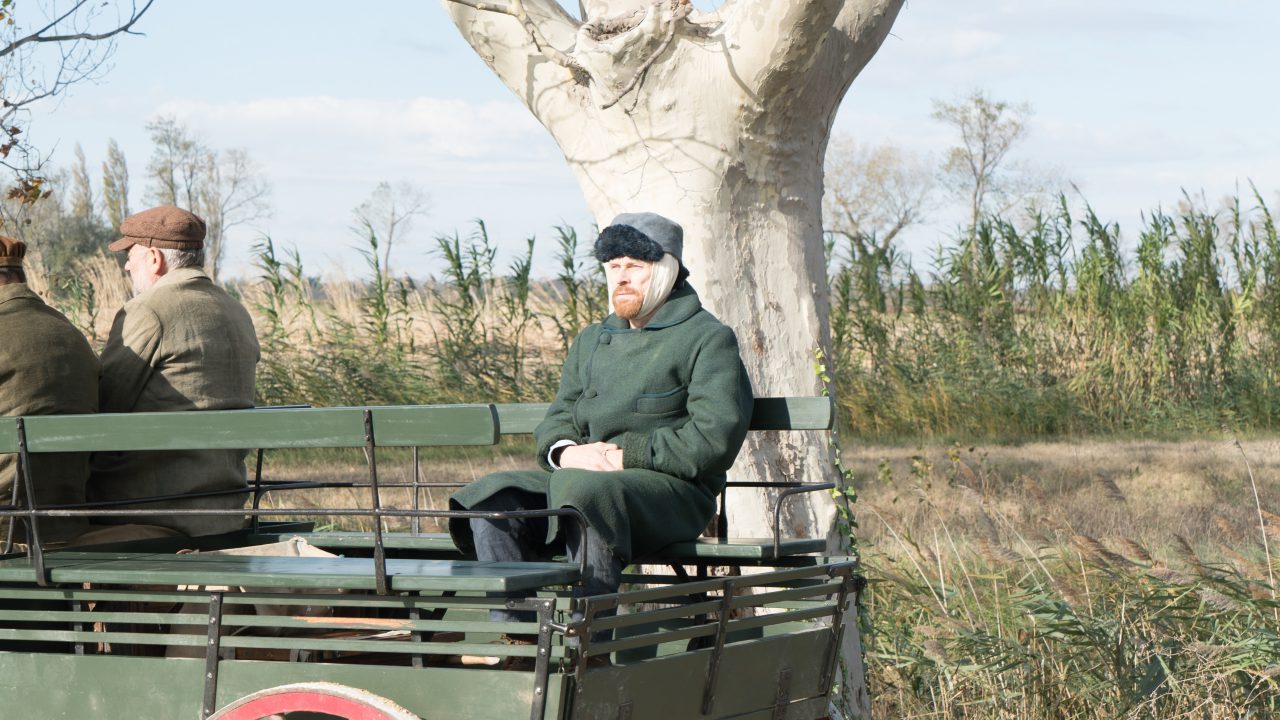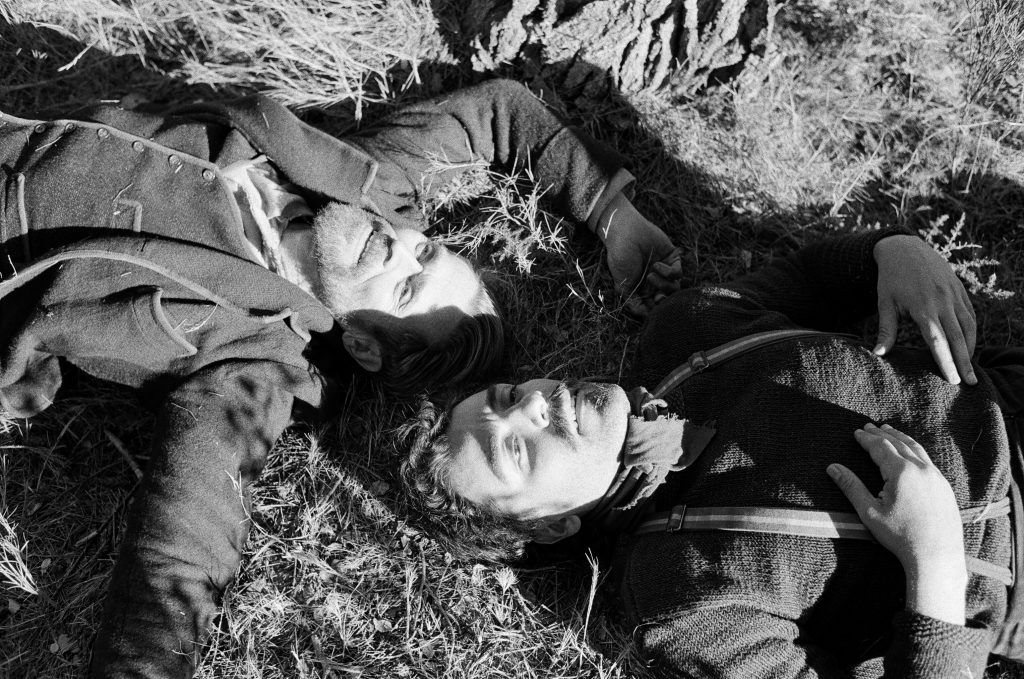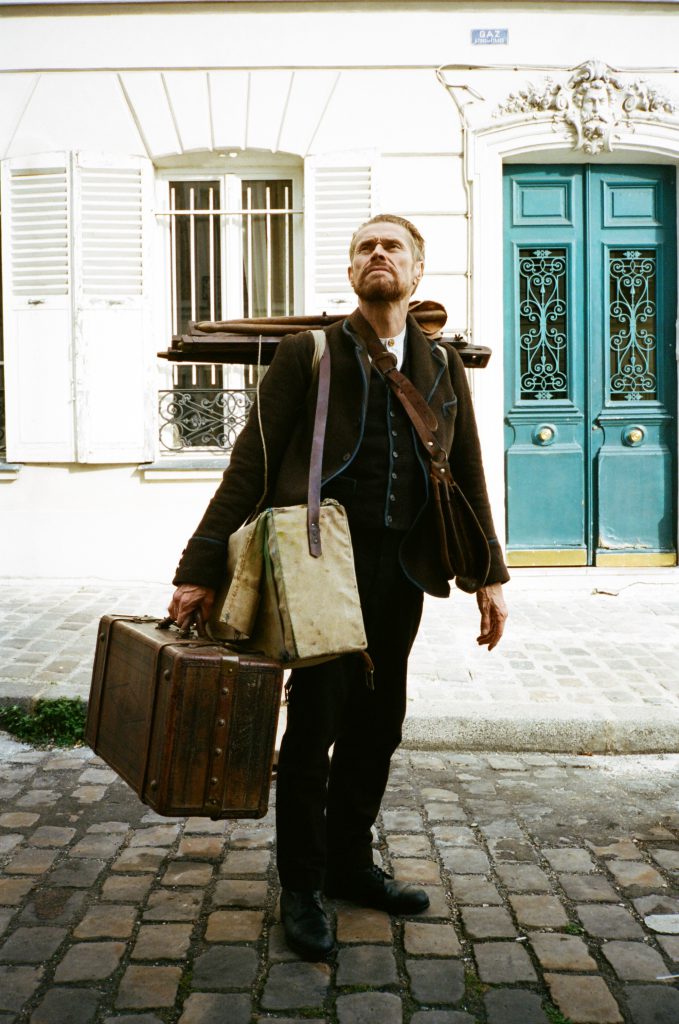
Can a movie that manipulates time with its aesthetic convey the intense whirlwind of emotion and passion contained in a painting? This is the seemingly impossible challenge Julian Schnabel was confronted with when making AT ETERNITY’S GATE. He wanted to capture things often missing in movies about artists, and thus create an unparalleled vision of the last days of van Gogh’s life. The movie is an attempt to take an alternative look at the life of an artist by recreating and reinterpreting the act of painting in an intimate, profound way. „The van Gogh in this movie is a direct reflection of my reaction to his work, rather than what others have written about him,“ says Schnabel. It is with this conviction that, together with his script writer Jean-Claude Carrière, he entered the exhibition at Musée d’Orsay entitled „Van Gogh/Artaud: The Man Suicided by Society”.
Jean-Claude Carrière is a famous French screenwriter, novelist, and actor. He is known for his collaboration with the master director Luis Buñuel (BELLE DE JOUR, THE DISCREET CHARM OF THE BOURGEOISIE) as well as his screenplays for THE RETURN OF MARTIN GUERRE or THE UNBEARABLE LIGHTNESS OF BEING. Carrière received an honorary Oscar® in 2014 for his work as a screenwriter.
As they walked through the 40 paintings in the exhibition, including Self-Portrait, Gaugin’s Chair, Portrait of Dr. Gachet, Augustine Rouline, and A Pair of Shoes, they began discussing a possible film, and the idea suddenly took on a life of its own. Carrière recalls, „I found it highly interesting that a painter wanted to make a film about the life of a painter.“ By that afternoon, Schnabel already had a sense of the structure of the film:
„Whenever you stand in front of a painting, it is telling you something. But after 30 paintings, that feeling becomes more comprehensive. They become an amalgamation of all those different emotions. And that’s exactly what I wanted to achieve with this film. I wanted to structure it in such a way that all the events in Vincent’s life would condense, so it would feel as if his whole story were playing out in an instant.”
With that as a springboard, Schnabel and Carrière formed their first impressions of how the film could be structured. „We started writing together,“ says Carrière, „but we never intended on making a classic biography or on answering any of the typical questions. We found it much more interesting to delve into van Gogh’s mind toward the end of his life, and to explore just how aware he was of the fact that he had a new vision of the world and that he couldn’t go on painting like the other painters. He brought the world a new way of seeing, and that’s exactly what we wanted to emulate in the film.”
Carrière continued, „Together with a painter, I studied another painter, namely van Gogh. With the exception of a few drawings by Artaud, I found myself in the company of Julian and van Gogh. At a certain point, he stopped me in front of one of the self-portraits and had me inspect it in detail, from a distance of perhaps 20 cm. He stood on one side of the painting, and I stood on the other, so that we took up about half a square meter. To my surprise, he started to explain the painting technique, mentioning neither the subject of the portrait nor the emotions the painting evoked. He spoke about color, technique, and structure. His comments were so keen and precise that the emotion within the painting was not destroyed, but actually brought to life. It was as if van Gogh was listening. I almost felt like I could hear his heart beating, hear him breathing beside us, because he was glad to hear what another painter was saying about him.
I was 82 and not in my wildest dreams did I expect that a painting could elicit such an emotional response in me at that age. I have Julian to thank for that, of course. On my own, I probably would have walked past those paintings without noticing a thing. Those reflections were not merely socio-aesthetic or historical in nature, and I valued that tremendously.
I think my experience as a filmmaker probably played a role as well. Because for me, technique is a language: No camera movement is innocent. The same goes for van Gogh’s self-portrait.
We stood there for a very long time. And that day, I learned just how much you can achieve with painting. And all that thanks to very simple, almost ordinary observations: ‘He used this kind of brush, this type of paint. This is how he began, this is how he continued and so on.’ It was like the story of a birth, the beginning of a life.“
Julian Schnabel’s AT ETERNITY’S GATE is based upon letters, biographies, well-known legends, and countless historical analyses. Yet at its heart, the movie is a work of pure imagination, an ode to the spirit of creativity and to the life-altering power of absolute conviction.
SCHNABEL WAS INTERVIEWED AT THE 2019 TORONTO INTERNATIONAL FILM FESTIVAL ABOUT HIS INSPIRATION FOR MAKING THE FILM AND HIS INSIGHT INTO THE WORK OF VAN GOGH.




